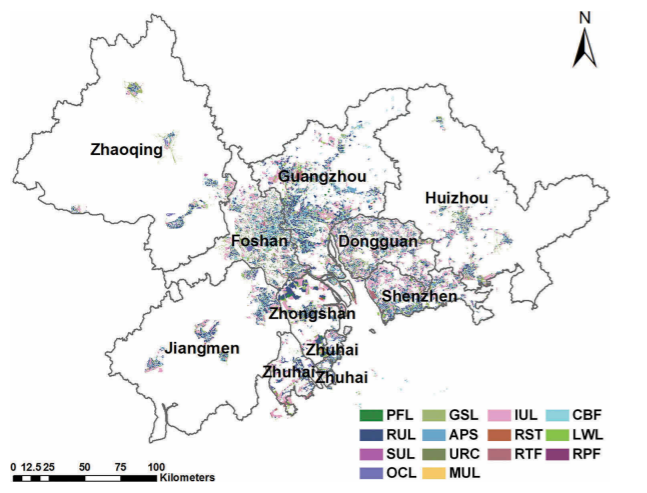Abstract
Urban land use information plays an essential role in a wide variety of urban planning and environmental monitoring processes. During the past few decades, with the rapid technological development of remote sensing (RS), geographic information systems (GIS) and geospatial big data, numerous methods have been developed to identify urban land use at a fine scale. Points-of-interest (POIs) have been widely used to extract information pertaining to urban land use types and functional zones. However, it is difficult to quantify the relationship between spatial distributions of POIs and regional land use types due to a lack of reliable models. Previous methods may ignore abundant spatial features that can be extracted from POIs. In this study, we establish an innovative framework that detects urban land use distributions at the scale of traffic analysis zones (TAZs) by integrating Baidu POIs and a Word2Vec model. This framework was implemented using a Google open-source model of a deep-learning language in 2013. First, data for the Pearl River Delta (PRD) are transformed into a TAZ-POI corpus using a greedy algorithm by considering the spatial distributions of TAZs and inner POIs. Then, high-dimensional characteristic vectors of POIs and TAZs are extracted using the Word2Vec model. Finally, to validate the reliability of the POI/TAZ vectors, we implement a K-Means-based clustering model to analyze correlations between the POI/TAZ vectors and deploy TAZ vectors to identify urban land use types using a random forest algorithm (RFA) model. Compared with some state-of-the-art probabilistic topic models (PTMs), the proposed method can efficiently obtain the highest accuracy (OA = 0.8728, kappa = 0.8399). Moreover, the results can be used to help urban planners to monitor dynamic urban land use and evaluate the impact of urban planning schemes.

Q.E.D.









